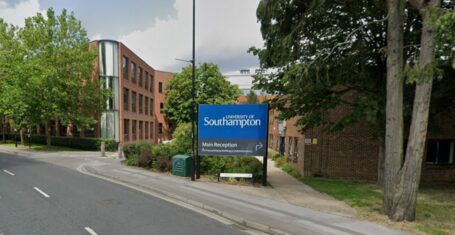
Blackout 2014: What's all the fuss about?
Rather than an appealing sounding episode of drinking yourself unconscious, the annual University-wide ‘Blackout’ event is a collaboration between students and staff to save energy. The idea is to tear around […]
Rather than an appealing sounding episode of drinking yourself unconscious, the annual University-wide ‘Blackout’ event is a collaboration between students and staff to save energy. The idea is to tear around the campus on a Friday night switching off unused appliances, computers, lights and the like, in order to reap some nice savings over a weekend.
While this may sound innocuous enough, previous year’s events have raised objections from students and staff for a few different reasons (hell hath no fury like a PhD student whose computer has been switched off while running a simulation). So before the festivities kick off on Friday 14th November, we put a few questions to the organisers of Blackout to get some concrete answers.
What’s the point?
To kick off, I wanted to establish firmly whether the event is about saving money for one evening, or raising awareness for more broad energy saving. Publicity material about the 2012 event has focussed a lot on the numbers of how much energy was saved over the weekend of the Blackout, with some saying the 6% saving was hardly worth celebrating. The response from the organisers was pretty clear: Blackout is a spearhead to get people thinking more about saving power.
The overarching goal of Southampton Blackout is to raise awareness about the carbon savings possible if everyone adopted small behaviour changes…Blackout isn’t just about reducing our electricity consumption over one weekend, but to identify and publicise how much electricity could be saved if everyone switched off at the end of each day.
That said, this reporter hasn’t been shown anything to suggest energy usage is improving year-on-year, although keep in mind that absence of evidence isn’t evidence of absence!
What about the pizza and the hoodies?
250 people taking part each year equals 250 hoodies being printed and 250-persons-worth of pizza delivered. Is this factored into energy gains? This argument gets raised time and time again by people who clearly feel very proud of having come up with the question, despite it having an obvious counterargument.
My guess was that the pizza cooking barely impacts the final figure since (presumably) the people taking part would have cooked dinner at home anyway. Everyone uses some energy for dinner, either at home or from a take away. The organisers also added:
The hoodies aren’t just used once, but continue to be worn by students and staff around the campuses reinforcing the energy reduction message…There are efficiencies in mass catering for over 250 people at one time compared to the individual cooking and transport impacts of over 250 separate meals. This year we have reduced the impact of the pizzas by having them made in SUSU, rather than transported from local takeaways.
What happened last year?
If you’ve stumbled upon the Blackout website, you may have noticed the lack of any mention of last year’s event or the results. More interestingly, the (freely available) University power use data showed that the 2013 Blackout weekend actually performed worse than the weekend following.
Energy usage for the week prior, and two weeks after, the 2013 Blackout weekend (shown between the black lines). See how the next two weekends are lower?
Unfortunately the response from the organisers wasn’t anywhere near as clear cut for this question, with remarks about the system used being outdated and “dying” (that doesn’t means it’s inaccurate), and the manual study of the data being “incredibly time consuming” (the above graph took me about five minutes with the help of a friend).
Most tellingly, they didn’t even attempt to refute the statement that the 2013 event was– by their own standards– a failure, merely blaming extenuating circumstances and the complication of measuring the results. This begs the question of how they intend to report anything concrete this time around.
To sum up, while the stated goal of Blackout is very clear, there seems to be some evidence that the event is not working as well (over a weekend) as planned. Maybe that doesn’t matter, and the focus should be more on long-term awareness; but if that’s the case, why does the publicity material not focus on year-on-year improvements?
What do you think about Blackout? Is it a useful flagship to help us think economically or an overhyped publicity stunt? As always, let us know below!







































